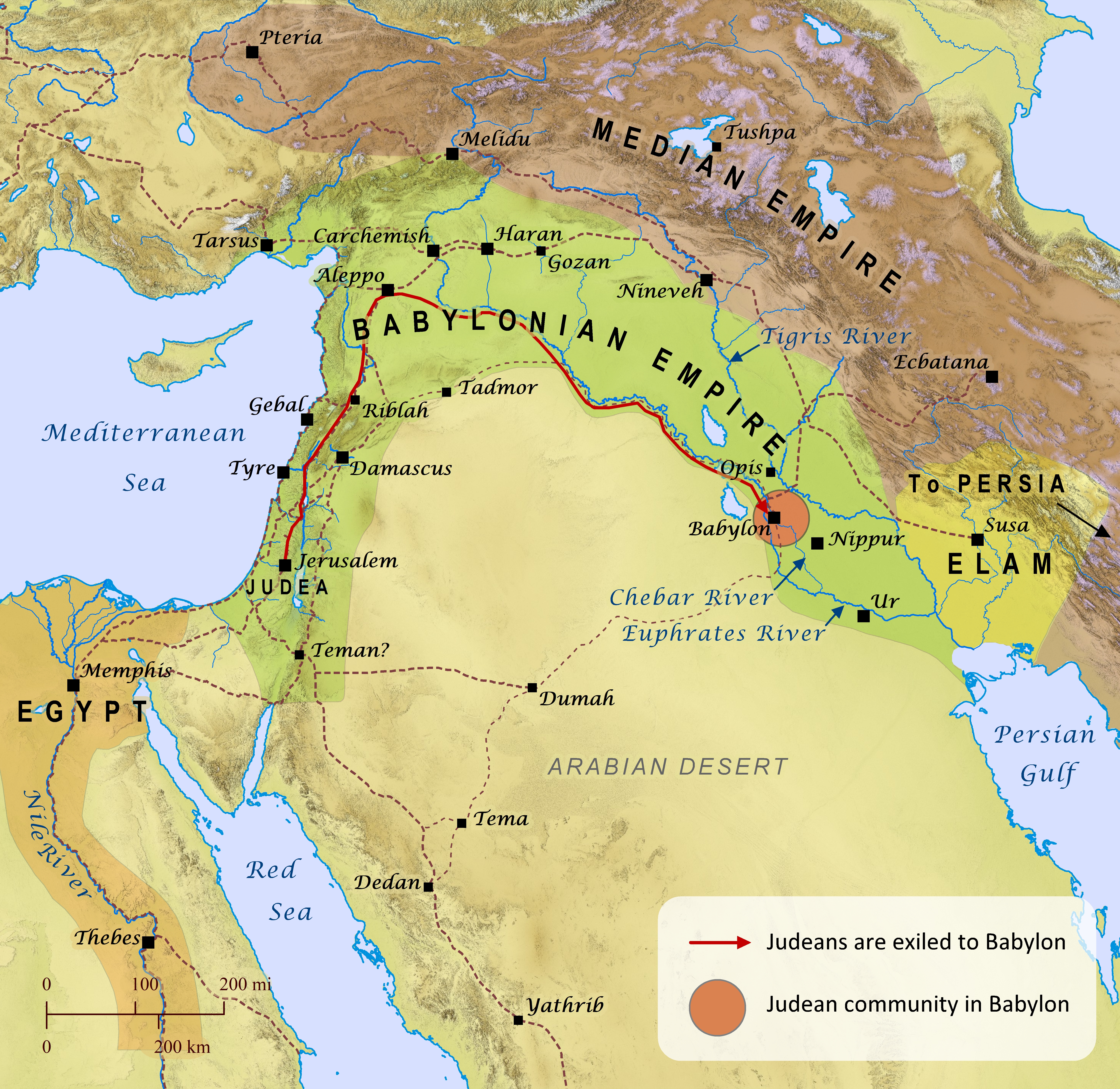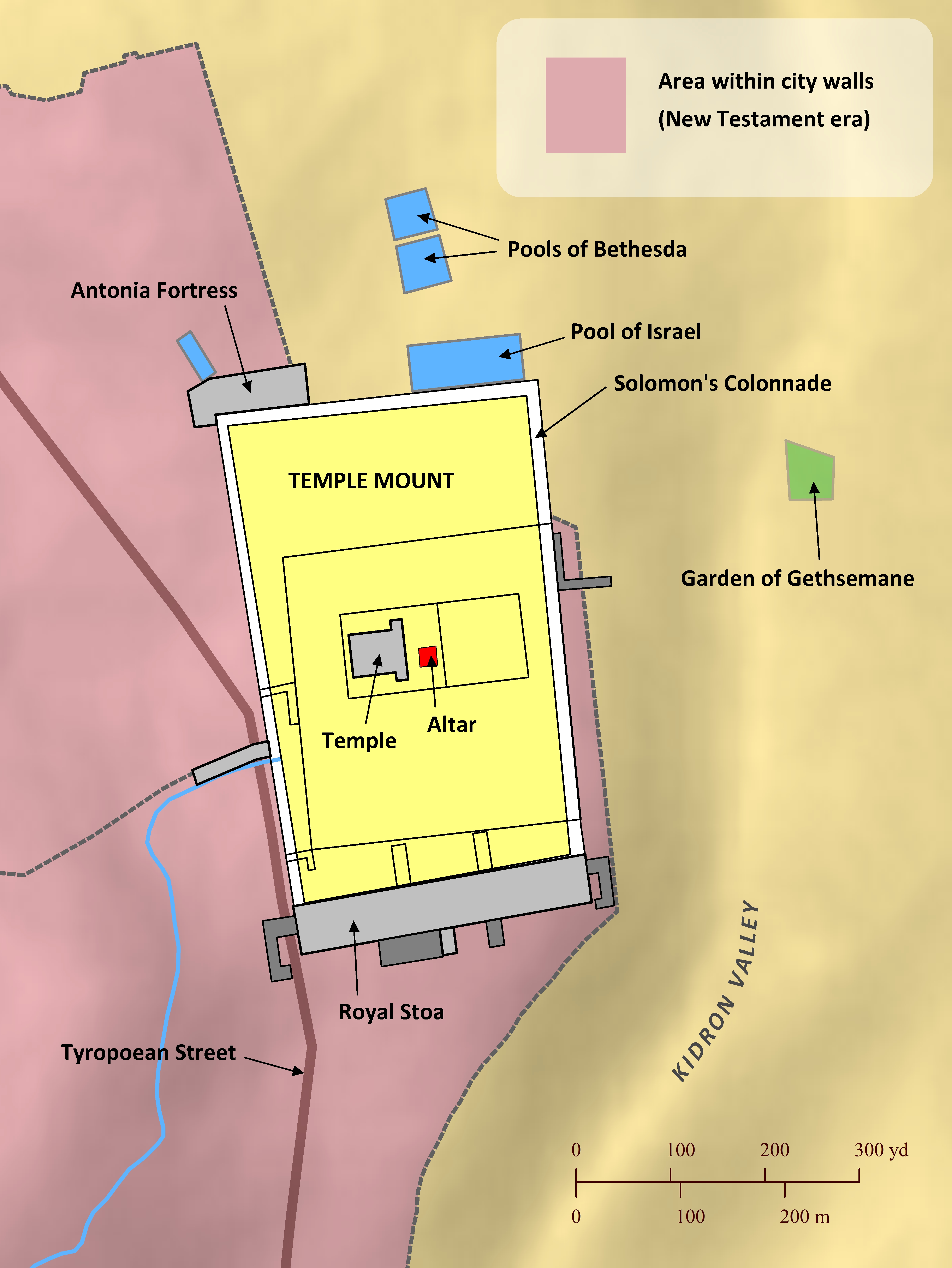Note: This view shows ‘verses’ which are not natural language units and hence sometimes only part of a sentence will be visible—click on any Bible version abbreviation down the left-hand side to see the verse in more of its context. Normally the OET discourages the reading of individual ‘verses’, but this view is only designed as a tool for doing comparisons of different translations—the older translations are further down the page (so you can read up from the bottom to trace the English translation history). The OET segments on this page are still very early looks into the unfinished texts of the Open English Translation of the Bible—please double-check these texts in advance before using in public.
OEB No OEB JER book available
WEBBE The Chaldeans broke the pillars of bronze that were in the LORD’s house and the bases and the bronze sea that were in the LORD’s house in pieces, and carried all of their bronze to Babylon.
WMBB The Kasdim broke the pillars of bronze that were in the LORD’s house and the bases and the bronze sea that were in the LORD’s house in pieces, and carried all of their bronze to Babylon.
NET The Babylonians broke the two bronze pillars in the temple of the Lord, as well as the movable stands and the large bronze basin called the “The Sea.” They took all the bronze to Babylon.
LSV And the pillars of bronze that [are] in the house of YHWH, and the bases, and the bronze sea that [is] in the house of YHWH, the Chaldeans have broken, and they carry away all the bronze of them to Babylon;
FBV The Babylonians broke into pieces the bronze pillars, the movable carts, and the bronze Sea that belonged to the Lord's Temple, and they took all the bronze to Babylon.
T4T The soldiers from Babylonia broke into pieces the huge bronze pillars that were in front of the temple, and the large bronze water tank, and the ten bronze water carts, and they took all the bronze to Babylon.
LEB And the Chaldeans broke the pillars of bronze that were in the ⌊temple⌋[fn] of Yahweh, and the kettle stands and the sea of bronze that were in the ⌊temple⌋[fn] of Yahweh, and they carried all their bronze to Babylon.
BBE And the brass pillars which were in the house of the Lord, and the wheeled bases and the great brass water-vessel in the house of the Lord, were broken up by the Chaldaeans, who took all the brass away to Babylon.
Moff No Moff JER book available
JPS And the pillars of brass that were in the house of the LORD, and the bases and the brazen sea that were in the house of the LORD, did the Chaldeans break in pieces, and carried all the brass of them to Babylon.
ASV And the pillars of brass that were in the house of Jehovah, and the bases and the brazen sea that were in the house of Jehovah, did the Chaldeans break in pieces, and carried all the brass of them to Babylon.
DRA The Chaldeans also broke in pieces the brazen pillars that were in the house of the Lord, and the bases, and the sea of brass that was in the house of the Lord: and they carried all the brass of them to Babylon.
YLT And the pillars of brass that [are] to the house of Jehovah, and the bases, and the brasen sea that [is] in the house of Jehovah, have the Chaldeans broken, and they bear away all the brass of them to Babylon;
Drby And the brazen pillars that were in the house of Jehovah, and the bases, and the brazen sea that was in the house of Jehovah, the Chaldeans broke up, and carried all the brass thereof to Babylon.
RV And the pillars of brass that were in the house of the LORD, and the bases and the brasen sea that were in the house of the LORD, did the Chaldeans break in pieces, and carried all the brass of them to Babylon.
SLT And the pillars of brass which were to the house of Jehovah, and the bases, and the sea of brass which was in the house of Jehovah, the Chaldeans brake in pieces, and they will lift up their brass to Babel.
Wbstr Also the pillars of brass that were in the house of the LORD, and the bases, and the brazen sea that was in the house of the LORD, the Chaldeans broke, and carried all the brass of them to Babylon.
KJB-1769 Also the pillars of brass that were in the house of the LORD, and the bases, and the brasen sea that was in the house of the LORD, the Chaldeans brake, and carried all the brass of them to Babylon.
KJB-1611 Also the pillars of brasse that were in the house of the LORD, and the bases, and the brasen sea that was in the house of the LORD, the Caldeans brake, and caried all the brasse of them to Babylon.
(Modernised spelling is same as from KJB-1769 above)
Bshps The Chaldees also brake the brasen pyllers that were in the house of the Lord, yea the seate and the brasen lauer that was in the house of the Lorde, and caryed all the mettall of them vnto Babylon.
(The Chaldees also brake the brasen pillars that were in the house of the Lord, yea the seat and the brasen laver that was in the house of the Lord, and carried all the mettall of them unto Babylon.)
Gnva Also the pillars of brasse that were in the House of the Lord, and the bases, and the brasen Sea, that was in the house of ye Lord, the Caldeans brake, and caried all the brasse of them to Babel.
(Also the pillars of brass that were in the House of the Lord, and the bases, and the brasen Sea, that was in the house of ye/you_all Lord, the Chaldeans brake, and carried all the brass of them to Babel. )
Cvdl The Caldees also brake the brasen pilers, that were in the house of the LORDE, yee the seate and the brasen lauer that was in the house of ye LORDE: & caried all the metall of them vnto Babilon.
(The Chaldees also brake the brasen pillars, that were in the house of the LORD, ye/you_all the seat and the brasen laver that was in the house of ye/you_all LORD: and carried all the metal of them unto Babylon.)
Wycl Also Caldeis brakun the brasun pilers, that weren in the hous of the Lord, and the foundementis, and the brasun waischyng vessel, that was in the hous of the Lord; and thei token al the metal of tho in to Babiloyne.
(Also Chaldees brakun the brasun pillars, that were in the house of the Lord, and the foundations, and the brasun washing vessel, that was in the house of the Lord; and they token all the metal of those in to Babylon.)
Luth Aber die ehernen Säulen am Hause des HErr’s und das Gestühle und das eherne Meer am Hause des HErr’s zerbrachen die Chaldäer und führeten all das Erz von denselbigen gen Babel.
(But the brazen pillars/columns in/at/on_the house the LORD’s and the Gestühle and the brazen sea in/at/on_the house the LORD’s brokeen the Chaldeans and led all the ore from the_same to/toward Babel.)
ClVg Columnas quoque æreas quæ erant in domo Domini, et bases, et mare æneum quod erat in domo Domini, confregerunt Chaldæi, et tulerunt omne æs eorum in Babylonem,
(Columnas too to_beas which they_were in/into/on at_home Master, and bases, and the_sea æneum that was in/into/on at_home Master, they_broke Chaldæi, and they_took everything brass their in/into/on Babylon, )
RP-GNT No RP-GNT JER book available

